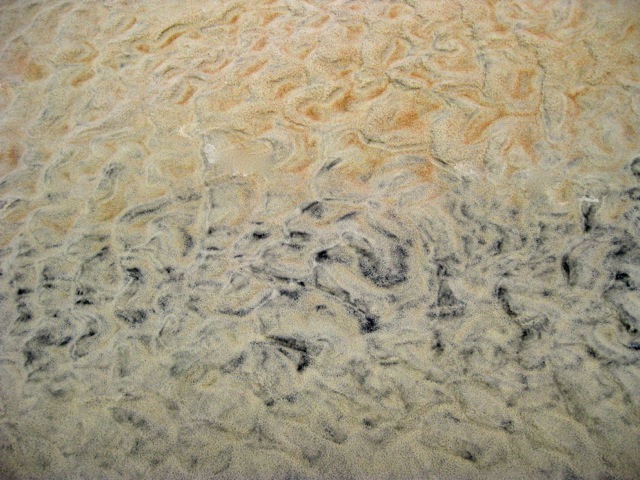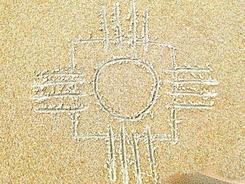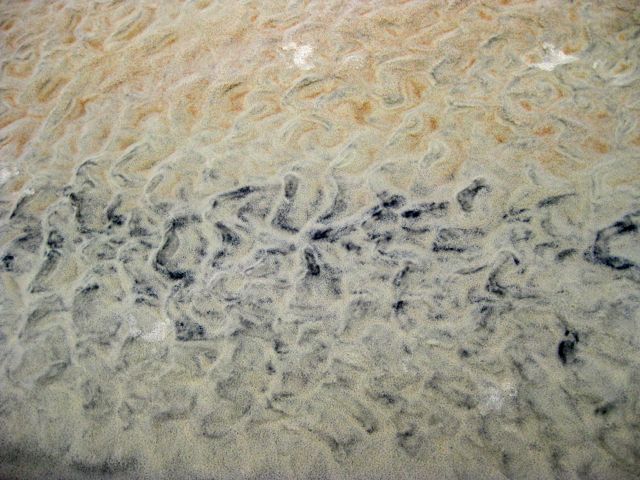Meet the Teachers
Florida Sandplay Therapy Association
SandSearch.org
Interview with Joe Meyer, STI Sandplay Teacher
By Bunnie Graham
August 2013
How did you first become interested in sandplay therapy?
In the early '80s, after Dora formed ISST they decided to add the first new member. It was Barbara Weller from Minnesota. She did an introduction to Sandplay for the School Social Workers in St. Paul and six of us were hooked. We started a six-week class with Barbara to study "play therapy" and quickly focused on sandplay therapy in the schools. We extended for six more weeks until the end of the school year and then decided that we must do our own sandplay process. One of the other members of that group was Jackie Kelly, now a teaching member in Texas.
What sustains your interest in sandplay therapy today?
Now I teach, consult, and do process work with other therapists. When I receive feedback such as, "You gave me back my life!" or, "This is the most profound experience of my life!" or when a therapist says that her work with her most difficult clients has gotten easier since she started doing her own sandplay process, I find that I am also sustained. How can we not feel supported by the strength of the co-transference? For me, the wonderful people I meet who are sandplayers has been sustaining. I find the sandplay community to be a support group.
How does sandplay inform your life - why do you teach it?
I was fortunate that when I started my sandplay process my wife said, "You are not going on that journey without me" and then she did her process too. Until the day she died she has been a big supporter of sandplay and of people doing their own process and learning more about the work. One could say that sandplay has become a way of life for me.
Have you a favorite Dora story or quote?
The second time I was in California to attend one of her workshops, someone in the class made a point about a picture Dora was teaching from. Dora turned and looked at the picture and said, "Ya, Ya, I never noticed that before." I was impressed that Dora would learn from us and acknowledge that she could still learn about a picture she had used many times in her teaching. It made it clear to me that consultation is important because even the most seasoned sandplayer may miss things that another will notice.
How do Dora stories teach us about sandplay?
I was so impressed about the range of knowledge Dora shared about her research into the relationship between the fox and the rabbit that I began to understand that we could continue to learn about each and every symbol as we studied it throughout our lifetime. Are we ever done learning? Not if we are still alive!
Dora created and taught sandplay therapy. How do you carry forth her work and keep it vital today?
Dora did consultation and seminars as well as her ongoing sandplay therapy. I try to continue that effort by being available for consultation, advising, and supporting others.
To you, what are some essentials of sandplay therapy?
The free and protected space, the way we hold that space for our clients, the strength of the co-transference, the honoring of the specialness/sacredness of the work; these are all essential.
As a teacher, what is your main goal for students?
My main goal has always been for each of us to become the best therapist we can become. If we do our best possible job with our clients my work is successful.
Do you learn something as you teach sandplay therapy?
Always! We are connected, and just as when a client in therapy makes a discovery or has a special moment, we give to each other.
How does teaching sandplay therapy inform your own practice?
My hope is that I become more aware as I work with others and that transfers back to my ongoing work.
Have you had any experiences in teaching sandplay therapy that stand out?
Many, but the most recent one was in Rockford, Illinois last week. I presented for three hours on Complexes, Ego and Archetypes and it was easy to see that the group was immersed in the discussion. Since then I have had several e-mails supporting the idea that they "got it" and were pleased.
How does co-transference show up in the STI classroom?
As in therapy, I think one of the most important aspects of the presentation is the strength and depth of the relationship between us. So much is learned in the depth of the relationship. Even recent brain research would support that when we are connected in a meaningful way and tackle issues between us, we both develop new brain cells.
How do you teach about a method that is very subjective and private?
The great advantage we have in teaching about sandplay is the use of pictures. We can talk around a subject forever, but when we have the picture in front of us it provides a powerful peek into the life of another person. It is possible to relate our discussions to examples provided in the pictures.
Is there a religious (as used in Jung's work) aspect to Sandplay?
I would call it a spiritual dimension more than a religious aspect. The work can support one's religion, or no particular religion, but it is often deeply spiritual. There are times when I see and feel the work go beyond the co-transference to a numinous, sacred place.
Does your particular typology affect the way you teach sandplay?
Long before I heard about sandplay I tried to practice within the space of the effective relationship. I believe that has stayed with me in all of my work.
How do you see sandplay evolving over time?
As more teaching members become available around the world I would think that it will be more possible for new people to learn about sandplay and go into their own deep training process. That should make it more affordable too.
Fostering growth & healing through symbolic process




